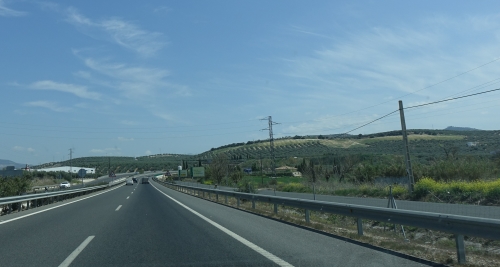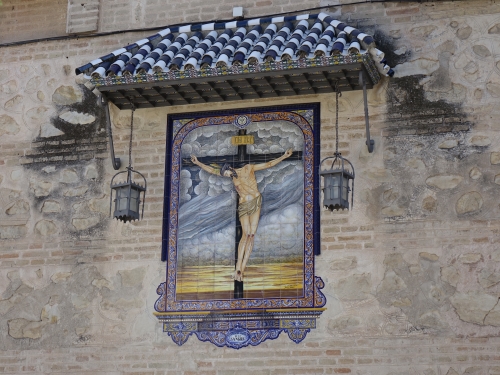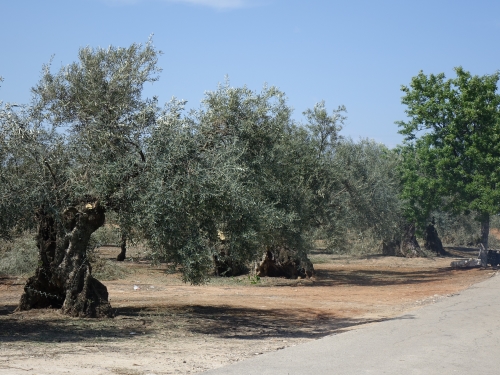Blog TWHS Visits
Olive Grove Landscape of Lucena
The Olive Grove Landscapes of Andalusia is a serious candidate for WH nomination by Spain in the coming years. I have it written down for 2022, but it might have to battle with Talayotic Culture of Minorca first (things go much more slowly now only 1 nomination per country per year is allowed). It was added to the Tentative List only in 2017 and comprises a well-defined set of 15 olive grove locations of the continuing cultural landscape type. Andalusia is the world's leading olive tree grower, producing 30% of the global production of olive oil. Its 'olive history' stretches back "thousands of years": the Phoenicians introduced the cultivated olive tree, while locals already exploited the wild olive trees.
The landscape is impossible to miss when driving from Malaga to Cordoba on the A-45 past Antequera: one sees nothing but olive groves for about 100km on both sides of the road. The tentative site description calls it a "sea of olive trees" - maybe inspiration for a future Epic Subtitle?
After my visit to nearby Medina Azahara, I went to take a closer look at one of the proposed Olive Grove Landscapes: Lucena. This is a different location from the one visited by previous reviewer Nan, who choose Archidona which lies more to the south. Lucena has long links with olive production. The town has an interesting general history as well, as it was a predominantly Jewish city during the time of moslim-dominated Al-Andalus: “The Jews earned their living from olive groves, vineyards, agriculture, commerce, and crafts.” (source)
Nowadays the town is mostly known for its many catholic churches and extensive Semana Santa celebrations. Its Parish Church of San Mateo has been converted from a synagogue and later a mosque. I walked around for a bit and the churches are indeed impressive, but that’s not what I came for. I needed lunch and photos of something olive related! Restaurants proved to be scarce and I resorted to some bread & serrano ham from the supermarket. The shelves were fully stocked with various types of olive oil, but none of them seemed to be locally produced.
After visiting the town I tried to get closer to some of the olive groves in the surroundings. They are everywhere, but difficult to access with a car. These are privately owned farms, with ‘no entry’ signs or security bars blocking casual visitors such as myself. I just snapped a few photos and left disappointed.
I like eating olives and there could really be something educating in here, how olives are grown, harvested and further processed into oil. And this is the #1 region for olive growing in the world. But my visit was a disappointing one, as there are no tourist amenities or interpretation centres focused on the olives. I’d liked to have visited an olive oil refinery for example. Of course there’s a signposted wine route in Lucena and there are bodegas to visit....
Els - 14 April 2019
Comments
Joel Baldwin 20 April 2019
We could've given you some tips and spots to visit here - we spent a couple of weeks pet-sitting in Lucena and would regularly Schnitzel and the other dogs on long walks through the olive groves!


